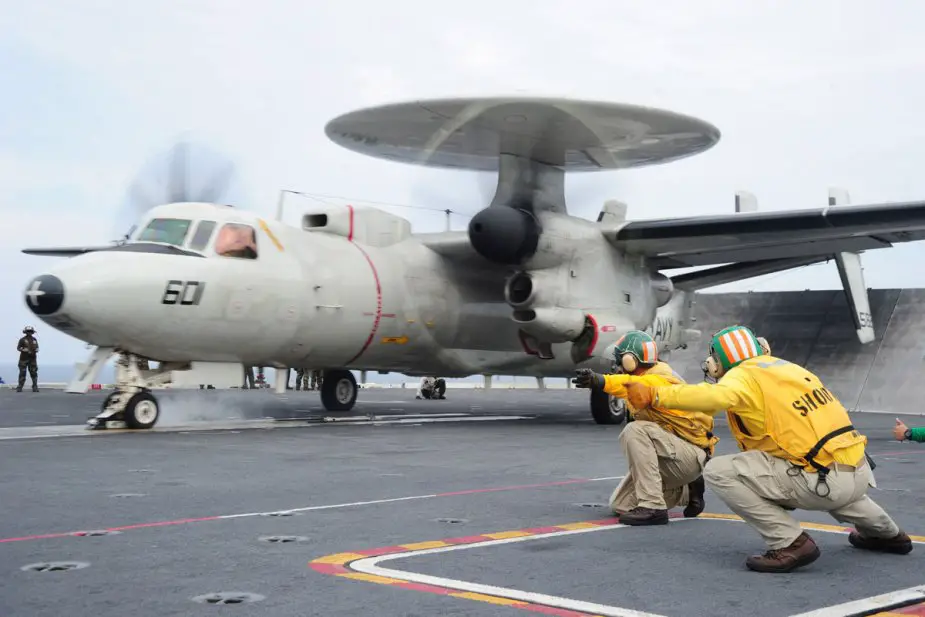Breaking news
Fleet Readiness Center Southwest completes maintenance E-2C Hawkeye.
According to information published by Naval Air Systems Command on August 12, 2021, the last E-2C Hawkeye to complete the planned maintenance interval two (PMI-2) procedure at Fleet Readiness Center Southwest (FRCSW) departed the command’s test line August 3 to Carrier Airborne Early Squadron 116 (VAW-116) stationed at Naval Base Ventura County.
Follow Navy Recognition on Google News at this link
 E-2C Hawkeye aircraft (Picture source: Military)
E-2C Hawkeye aircraft (Picture source: Military)
Developed by the Grumman Aircraft Company in the mid-1960s, the twin turbo-propeller E-2 Hawkeye and its sister airframe, the C-2A Greyhound transport, still serve aboard naval aircraft carriers.
Production of the airborne early warning system (AEWS) E-2C variant began in 1973. With its detachable 24-foot diameter rotodome radar system, the Hawkeye’s ability to guard against airborne threats remains the standard for protection of naval carrier battle groups to this day.
FRCSW performs two levels of scheduled maintenance on the airframe: PMI-1, or a light maintenance interval at FRCSW’s Site Pt Mugu and FRC Mid-Atlantic, and PMI-2, or a heavy maintenance which is handled at FRCSW’s Building 460 onboard Naval Air Station North Island (NASNI).
During PMI-1, artisans assess the attachment points of the flight control surfaces on the body of the aircraft, the engines, and other areas identified in the maintenance specification. Sheet metal repairs are made and worn parts replaced.
Though not a complete overhaul, PMI-2 is a substantial disassembly of the aircraft down to the fuselage. Artisans remove the aircraft’s wings, engines, landing gear and tail.
By using chemical or physical means, the aircraft’s corrosion preventive paint is removed and an in-depth metal assessment is performed to locate surface anomalies like cracks, corrosion, exfoliation and missing fasteners.
The E-2C is a high-wing airplane, with one turboprop engine in each wing, and retractable tricycle landing gear. A distinguishing feature of the Hawkeye is its 7.3 m diameter rotating dome that is mounted above its fuselage and wings. The E-2C Hawkeye is operated by a crew of five, with the pilot and co-pilot on the flight deck and the combat information center officer, air control officer and radar operator stations located in the rear fuselage directly beneath the rotodome.
The E-2C was originally fitted with two Allison T56-A-425 turboprop engines, but since the introduction of E-2C group I variants, T56A-427 engines rated at 3,800kW of output power have been fitted. With the new engines, the E-2C can cruise on station for more than four hours, up to 200 miles from base.





























